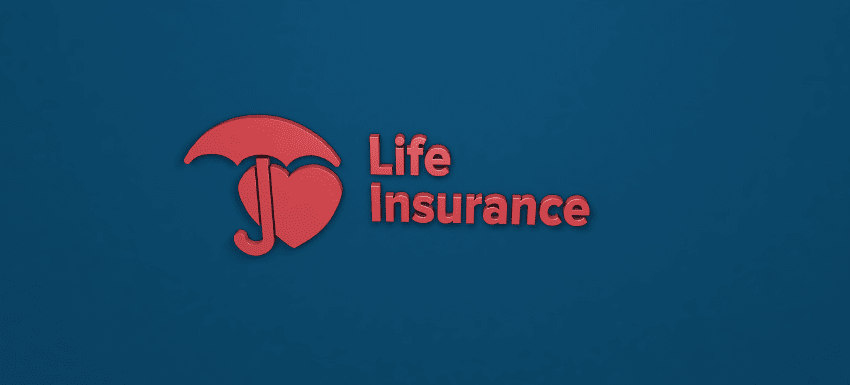
Make sure you have enough coverage because life insurance payouts might be essential for your loved ones’ financial stability. It’s crucial for those who will get the death benefit payment to comprehend the claim-filing procedure.
The majority of people are aware of the necessity for life insurance, but many are unaware of how it operates. In order for you to know what to anticipate, we’ll go over the fundamentals of life insurance payouts in this essay.
To get more information on payout procedures, always speak with your insurance provider. Keep in mind that they may differ based on your unique policy. So with that, let’s get started!
What is life insurance?

A contract between you and a life insurance provider is known as a life insurance policy. They agree to pay a death benefit (a lump sum of tax-free money) to someone you pick if you die. In exchange, you agree to pay them an insurance premium on a regular basis: (a small amount of money over time).
You and your partner decide on the quantities of money coming in and out, as well as the time frames involved, but that’s it in a nutshell.
What can a life insurance claim payment be used for?
Your beneficiary (the person you choose to receive the payout) is allowed to utilize the death benefit from your life insurance in any way they see fit. The death benefit is exempt from taxation. They can put the money towards:
- Covering day-to-day expenses so that their family can maintain a similar standard of living (groceries, bills, rent, etc.)
- Pay off your credit card debt (mortgages, lines of credit, credit card bills, business loans, etc.)
Invest in the education of their children. - Make a significant donation to their favorite charity.
- Make arrangements for their funeral.
- Keep their company safe.
If you don’t choose a beneficiary, the death benefit will be paid to your estate, which may be subject to taxation.
What are the different types of life insurance in Canada?
Life insurance is divided into two types: term and permanent (or whole life insurance). Both whole life and permanent life insurance offer advantages and disadvantages, but the vast majority of Canadians (76 percent) choose term insurance, either individually or via their company as part of a group plan.
Term life insurance
Term life insurance guarantees that if you die, we’ll pay out, but only if you die within a certain time frame, or ‘term.’ These terms are usually 10, 20, or 30 years long, but you can opt for shorter or longer terms, as well as coverage that lasts until a certain age.
Whole life insurance
Whole life insurance is a type of insurance that covers you for the rest of your life and has a monetary value. Whole life policies may also provide dividends dependent on the profits of the insurance company. It’s referred to as “participating insurance.”
Limited-pay whole life insurance
Limited-pay insurance is comparable to whole-life insurance, except the payment schedule is shorter. For example, if the term is 20 years, your insurance is assured for life and you are no longer responsible for premiums. The most expensive policy choice is usually this type of coverage. This is because premiums are paid in advance to compensate for the years when you will not be paying.
Universal life insurance
Universal life insurance is similar to whole life insurance, except that you have additional options for investing your cash value. If you’re a smart investor, you can get a better return than you would from a standard whole life policy. However, it necessitates that you keep a close eye on the cash value investments you’ve made. Alternative investment options may assist you in achieving your financial objectives more quickly.
Term to 100 life insurance
Term to 100 is a whole life insurance policy that insures you until you die, despite the term in the name. The distinction is that this policy has no cash value or investment component, resulting in lower premiums. In addition, if you live to be 100 years old, you will no longer be obliged to pay premiums and will retain your coverage. Canada is the only country that offers a term to 100 life insurance plans.
Annual renewable term life insurance (ART)
Annual renewable term life insurance (ART) is a less common life insurance alternative for consumers looking for short-term life insurance coverage. ART is accessible on an annual basis with the option of renewal and can help those who are unemployed, want to improve their health before committing to longer-term coverage or are in debt.
Do I need life insurance?

Perhaps a better thing to ask is whether or not the people in your life require it.
Insurance is used to pay off debts (personal or business-related) and provide a source of income to someone who relies on you but is no longer alive.
By purchasing life insurance, you can secure assets for your family’s future by investing in a secondary source of income. Without life insurance and the security of a death benefit, you’re putting all of your family’s financial eggs in one basket: your ability to produce an income while you’re alive.
You may believe you have life insurance through your employer’s group benefits, but such policies must be scrutinized carefully to ensure they cover all of your needs.
How much life insurance do I need?
You should purchase the most comprehensive life insurance policy you can afford. When they die, most people want to leave a multimillion-dollar fortune to their family and loved ones. However, most people are unable to do so due to budgetary constraints.
Determine what you consider to be an “affordable premium.” Create a budget to examine your family’s existing and future financial needs, as well as your current liabilities and debts, as well as any costs related to your death. This will show you what kind of coverage you should get and how much it will cost.
When should I buy life insurance?
Life events necessitate the purchase of life insurance. Purchasing a home, having children, and marrying are all signs that you have people in your life who rely on your salary to maintain their standard of living. Because insurance premiums climb as you get older, buying it earlier in life can save you money.
What is life insurance payout?

Life insurance payouts, to put it simply, is when your policy pays out money to you or your heirs.
Every life insurance policy has one, although the “death benefit” is the most typical. You can choose the amount of your death benefit when you purchase a policy, but the higher it is, the more you’ll have to pay in regular (often monthly) premiums.
When you acquire your policy, your age and health can have an impact on the price. You then choose a beneficiary, designating who or what you wish to receive the death benefit in the event that you pass away while insured. You may designate one or more insurance beneficiaries, as well as “secondary” insurance beneficiaries who will get the funds in the event that your “main” beneficiary passes away before or at the same time as you.
Another sort of payment is a “living benefit,” which, as the name suggests, is money you can get from your insurance policy while you’re still alive. This could make it possible for you to take money out of, borrow against, or even use a policy’s “cash value”—a sum of money that can increase, typically through investments—to pay premiums.
If you’re chronically or terminally sick and in need of financial assistance, your policy may also include a rider that, for an additional fee, enables you to receive a portion of your death benefit.
Find out what your beneficiary status is

The individual who receives life insurance payouts upon your passing might be chosen as a beneficiary when you buy a life insurance policy. Any person, including a spouse or partner, other family members, or even a pet, may be designated as your beneficiary to receive the death benefit.
Additionally, you have the option to designate several insurance beneficiaries. If there are many beneficiaries, be sure to indicate what portion goes to each. Additionally, you may provide one or more alternative beneficiaries. The insurer will pay the contingent beneficiary any proceeds in the event that your primary beneficiary passes away before you do.
Inform the insurance beneficiaries of any life insurance policies you have purchased so they can submit a claim for the death benefit in the event of your passing. After all, you wouldn’t want to pay thousands of dollars in premiums just to have nobody collect your insurance after you pass away.
You should be aware of the location of the life insurance policy, or at the very least the name of the insurer and the policy number, if a loved one named you as a beneficiary. When the time comes, it will be simpler for you to lodge a claim thanks to this information.
What can a life insurance claim payment be used for?
After your passing, your insurer will give your beneficiary or beneficiaries the life insurance payout sum. The money can be used however the receiver pleases. They can use it to cover regular costs or outlays like a mortgage or college tuition. Additionally, they can utilize money to settle debts like credit card payments. If your family decides not to use all of the policy earnings right now, they may decide to invest some of it for future growth.
If you are single, you can designate yourself as a beneficiary and have the death benefit paid straight to the institution as a tax-free gift. The proceeds of your policy will go to your estate and may be subject to taxation if it has no designated beneficiary.
Understand the different payout options
The beneficiary will be questioned by the insurer about how they want to receive the death benefit. There are numerous choices, including:
Lump-sum
Because this option offers a lot of flexibility, the majority of people prefer to get the entire death benefit in a single payment. The money is entirely in your hands, and you are free to use it whatever you like.
Specific income
The payout from the life insurance policy might be split up into payments. You can select this option to specify the number of payments to be made over how long, as well as the amount of each payment.
Lifetime income
A life insurance payout can be changed into an annuity at your discretion. Following then, the life insurance company will make regular payments until your death. Depending on the death benefit amount, your gender, and your age at the time of the insured’s death, you will get different payments.
Life income within a certain period
You can instruct the insurance to pay out over a specific time frame, such as five, ten, or twenty years, whichever is longer. The insurance company will pay the insurance beneficiaries you specify with the remaining benefits if you pass away within the time frame.
Interest income
Some life insurance providers let you store the life insurance payout in an account that earns interest and gets periodic interest payments. After your passing, a secondary beneficiary may receive the initial death benefit.
The proceeds of a life insurance policy are often not taxable, but any interest that is generated is. It is therefore unlikely that you will have to pay taxes if you decide to accept the life insurance benefit in a lump amount. If you want to get the money in installments, there can be tax repercussions.
Filing your claim

After the insured person passes away, the life insurance company does not instantly pay the policy proceeds to the beneficiary. To get the death benefits, you must submit a claim, which is a simple and straightforward process.
Here is how you can claim life insurance money:
Contact insurer or agent
After the insured’s passing, get in touch with the life insurance company or agent. They will walk you through the claim-filing procedure.
Get copies of the death certificate
The typical type of documentation required to submit a life insurance claim is a death certificate. You can receive certified copies with the assistance of the funeral director. Try to obtain as many as you can because you will require them for a number of things in addition to making a life insurance claim, including shutting accounts, terminating subscriptions, and submitting income taxes.
Request claim forms
The claim form will typically be available for download on the insurer’s website. A company person can assist you in obtaining forms if they are not readily available online. You must fill out the claim paperwork and give the insurance company all the details they request.
Decide how you want to be paid
Some insurers simply provide a lump sum payment for the death benefit. Others, though, provide a variety of choices. On the form, you must indicate how you wish to be paid the proceeds. If there are multiple beneficiaries, each one might need to submit a different form.
The amount of a life insurance payout is not taxed, but any interest is. Consult your financial advisor first if you’re unsure of which payout choice is best for you. After that, you might not be able to change the settlement choice.
Submit claim forms
Send the completed forms along with a certified copy of the insured’s death certificate.
You need to wait after that is finished. To get the life insurance benefit, it may take a few days to a few weeks. But assuming everything is in order, you should receive the cheque rather fast.
How quickly are benefits paid?
Receiving the payoff could take as little as a few days or as much as a month. Following the submission of the claim, the time it takes to receive the death benefit is based on a number of variables, including the insurance company’s processes and if the policy is still within the contestability period.
The contestability period normally lasts 24 months beginning with the effective date of the life insurance policy. The insurance company has the right to postpone the payout if the insured passes away during this period while it examines the deceased’s medical records to make sure that there was no deception.
However, if everything is in order and the claim is submitted after the contestability period, insurance companies typically handle it quickly—in a week or two. It is not in their best advantage to delay since they risk punishment if they take too long.
The majority of the time, missing or incorrect documentation and information cause delays. As a result, double-check the claim form before emailing it to make sure you haven’t overlooked anything.
Are life insurance benefits taxable?
You might be wondering, “How do life insurance payouts work? ” as the recipient of a life insurance policy. Is it considered income subject to taxes?
The death benefit amount is typically not included in calculations of taxable income. Therefore, it is unlikely that you will owe taxes if you choose to receive the policy profits in a single payment.
However, interest derived from the death benefit sum is subject to taxation. Therefore, if you want to get the money in installments, be prepared to pay taxes on a portion of that income.
If the estate of the insured is listed as beneficiary, the person who inherits the inheritance may be subject to taxation.
What happens to unclaimed life insurance benefits?

Sometimes beneficiaries are unaware that they are listed beneficiaries on a life insurance policy, which may come as a surprise. In such circumstances, the insurer will make contact with the beneficiary if they learn that the insured has passed away.
But occasionally, that could prove to be really challenging. It may be difficult to trace the recipient since they may have moved multiple times or changed their name. In those situations, the insurer will provide the state the money from the unclaimed death benefit.
Another possibility is that the insurer is unaware of the insured’s passing. In these situations, the coverage typically terminates as a result of unpaid premiums.
Keys Takeaways
- To be able to file a claim after your passing, you should be aware of your beneficiary status.
- The recipient will be questioned by the life insurance company about how they would like to receive the death benefit.
- The value of the life insurance payout is not taxed, but any interest is.
Conclusion
So what happens if someone has a life insurance policy and dies? Usually, the insurance company notifies the policy’s beneficiary. It’s critical to submit a claim as soon as practical following the insured person’s passing if you are the beneficiary. Additionally, you must choose between monthly installments and a lump sum as your preferred method of payment. The payout from a life insurance policy might offer your loved ones the much-needed financial security they require at this difficult time.
Which is the best life insurance policy?
The answer to this question isn’t found in the back of the book. Life insurance is a deeply personal purchase and there are many factors to consider. In addition to taking into account your current family’s financial needs, you should also account for future expenses like tuition, funeral arrangements, estate taxes, and any other debts you would like settled if you died. (If that sounds complicated, there are insurance calculators).
When you search for insurance quotes, there is a multitude of options to choose from. Nevertheless, you should only purchase a policy you can afford and that makes sense for you and your family.
Thankfully, AG Group Enterprise Ltd, is here to help! Our mission at AG Group is to provide a wide range of life insurance policies, including term coverage, permanent coverage, RRSPs, RESPs, and more!
With AG group’s insurance policies, you can protect the future of your family and your finances. A good policy ensures a bright future!



